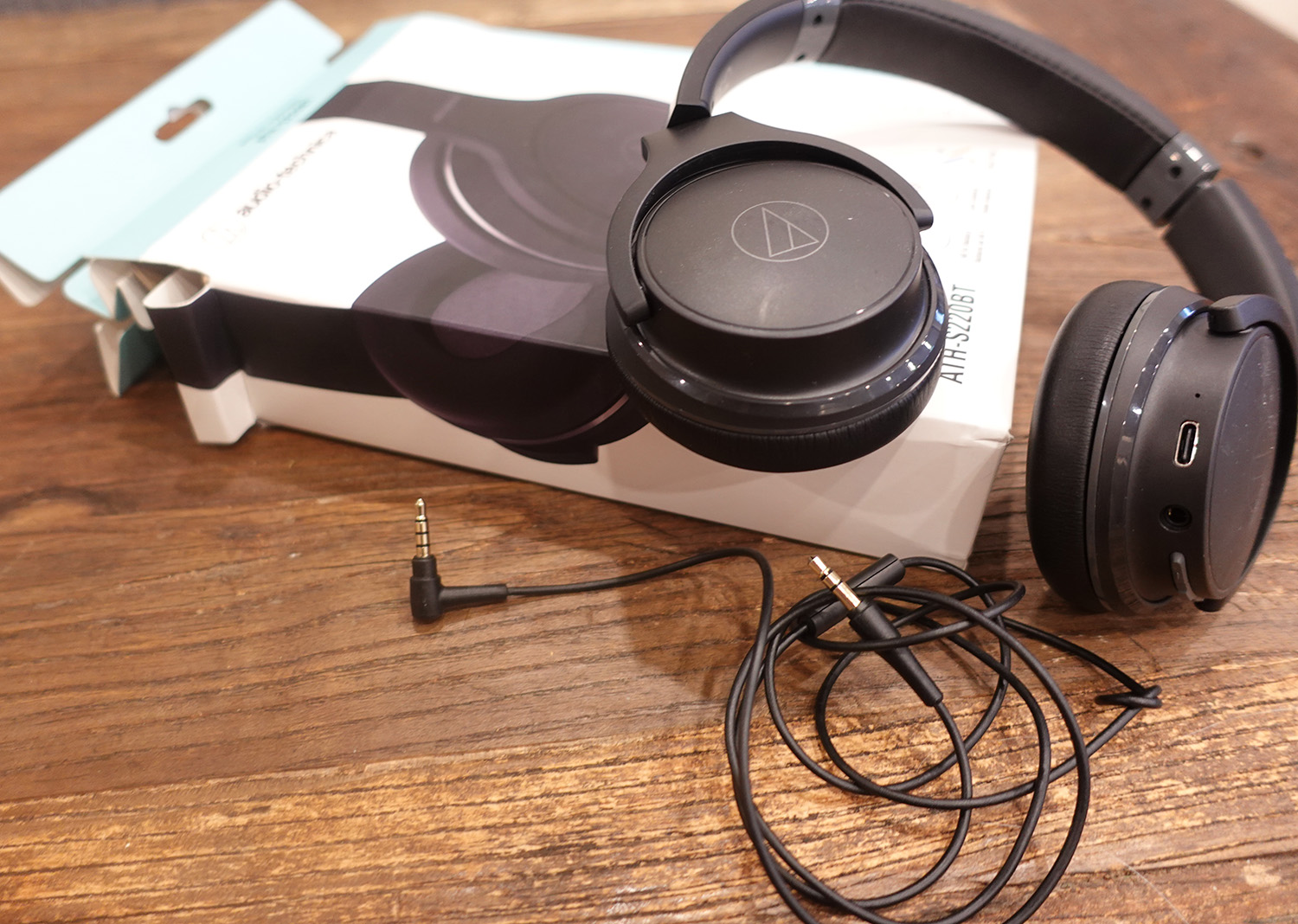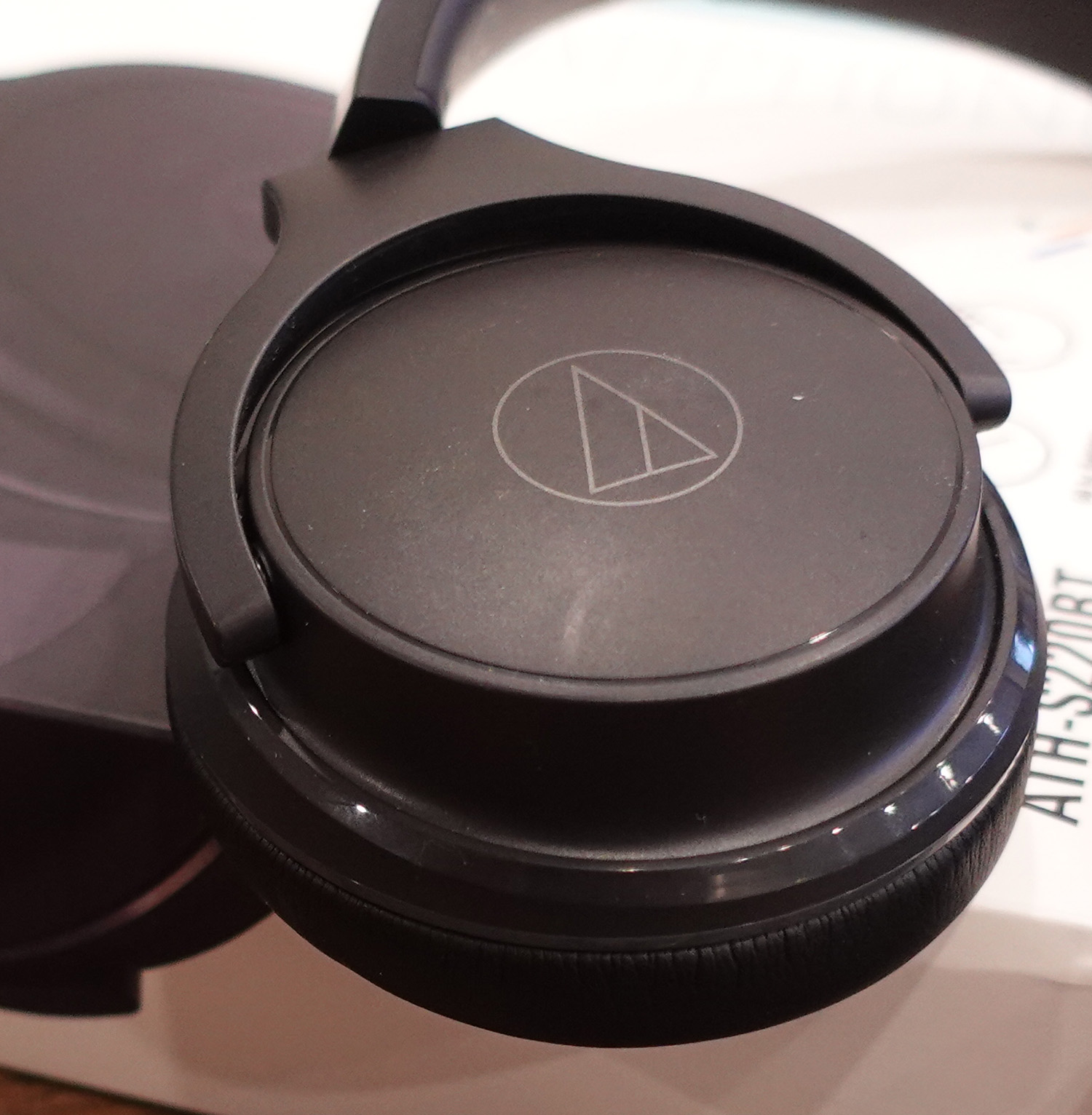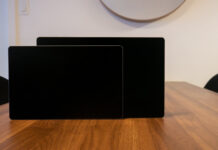 Look in any professional recording studio and you’re likely to find a bunch of Audio-Technica over-the-ear headphones, as their higher-end models have long been praised for their robustness and performance. The affordable Audio-Technica ATH-S220BT carries some of this legacy down to its more consumer-oriented set of headphones, adding in the convenience of wireless Bluetooth as well as allowing for an optional “old school” wired connection. Let’s find out how the ATH-S220BT’s live up to the task!
Look in any professional recording studio and you’re likely to find a bunch of Audio-Technica over-the-ear headphones, as their higher-end models have long been praised for their robustness and performance. The affordable Audio-Technica ATH-S220BT carries some of this legacy down to its more consumer-oriented set of headphones, adding in the convenience of wireless Bluetooth as well as allowing for an optional “old school” wired connection. Let’s find out how the ATH-S220BT’s live up to the task!
Audio-Technica ATH-S220BT Specifications
- Type: Closed-back dynamic over-ear headphones
- Driver: 40 mm
- Frequency response: 5 – 32,000 Hz
- Battery: Approx. 60 hours continuous use
- Optional 3.5mm Cable: 1.2 m iS controller cable with mic
- Weight: Approx. 180 g (6.3 oz)
- Bluetooth: Version 5.0 with multipoint connection
ATH-S220BT setup, comfort, and performance
Out of the box, the ATH-S220BTs were seamless to use, whether connecting via Bluetooth or through the included 3.5mm wired jack. At just over 180g they’re lightweight without feeling flimsy, perfect to throw into a bag or just leave around your neck.
 When connected via Bluetooth the side buttons allow for volume control, power on/off, and play/pause which can also be used to launch a virtual assistant on your mobile device. A small microphone on the outside of the headphone is for providing voice commands, but the model does not feature noise-cancellation technology.
When connected via Bluetooth the side buttons allow for volume control, power on/off, and play/pause which can also be used to launch a virtual assistant on your mobile device. A small microphone on the outside of the headphone is for providing voice commands, but the model does not feature noise-cancellation technology.
The minijack option has an ample length custom cable with a straight connector on one end and right-angled on the other, with an in-line microphone to improve operation.
Charging is done via USB-C, and while it’s fairly ubiquitous these days, I remain extremely pleased that we’ve left behind inferior mini or micro charging ports from previous USB generations that were often prone to loosening of the connector or downright failure due to strain.
Audio-Technica ATH-S220BT sound quality
Because of its welcome hybrid nature, allowing a user to operate the S220BT in both wireless and wired modes, these headphones provide a kind of case study for modern headphones of this range.
You can think of the inclusion of Bluetooth on headphones as really a second product merged into the first, with the quality of sound determined not only by the headphones themselves but by the amplification and digital-to-analog conversion that must take place within the unit.
Cord-free vs corded
Operating as wireless headphones, the performance of the S220BT is average at best, and poor with certain revealing recordings. Things sounded thin and quite cold, a reflection of the implementation of the wireless component. As standalone Bluetooth speakers, the convenience of cord-free operation over sound quality is amplified.
On the flipside, when the wire is plugged in and playback is made from a mobile device (with a USB-C to 3.5mm dongle) or a dedicated portable player, the S220BT comes alive in a way that’s almost shocking. The difference is not small, by any means, and everything from the clarity of instrumentation, the soundstage, right through to maximum volume free from distortion is suddenly taken to a whole other level.

This Jekyll/Hyde divide between Bluetooth and Wired is as extreme as I’ve ever heard from wireless headphones, and in many ways, the S220BT can be seen as the prime exemplars of what’s often sacrificed on more affordable headphones in terms of wireless sound quality. It also further points to the fact that other, similar headphones from competitors do an extreme disservice when they remove the 3.5mm input. I feel as though they deny consumers the ability to make the most out of the underlying sound playback technology by bypassing the inner electronics. This is even more critical when on a voyage where the minijack remains an important connector.
I took a 13+ hour flight using these headphones for some of the trip, and the ability to use the in-flight system without resorting to the appalling free disposable in-ear sets they hand out was more appealing. Listening to everything from Jazz to Funk to the new Adele record showed that when wired, and played back through a high-end portable player with professional quality DACs, the performance of S220BT was quite appealing.

Even on a noisy flight the earpads and passive insulation did a decent job in keeping out the outside world, all without resorting to the “anti-noise” that active noise cancellation headphones employ to knock out sounds from around you. I much prefer this solution in general, as there’s no change in the timbre or quality of sound, and there’s no added bulk that sometimes accompanies these implementations.
Switching back to wireless after spending a few hours in wire mode was a bit of a let down, where things that sounded rich and musical when plugged in suddenly became dull and lifeless. Still, for things like spoke-word podcasts, or other radio-quality soundtracks or non-critical listening sessions, the convenience of going wireless is obvious. For me, however, the vast majority of time listening with these would be wired, with Bluetooth relegated to very occasional use.
Final thoughts on Audio-Technica ATH-S220BT
Despite my reservations about their performance when using a wireless connection, as a set of affordable wired headphones with Bluetooth capabilities for occasional use, I think the Audio-Technica ATH-S220BT headphones work extremely well.
While I found the wireless connection doesn’t offer the same playback as when they are wired, if you’re willing to hold onto wired solutions you’re getting some very decent sounding headphones for an excellent price. Above all, the Audio-Technica ATH-S220BT definitely shows the benefits of allowing consumers the choice between the two modes of connectivity, and they should be applauded for continuing to support the wired option given how well it does at showcasing the best of what this model can accomplish.
You can find the Audio-Technica ATH-S220BT headphones at Best Buy.






































